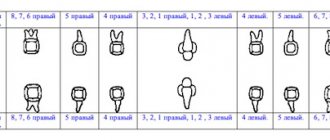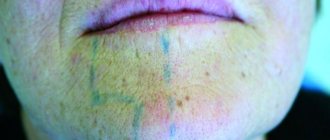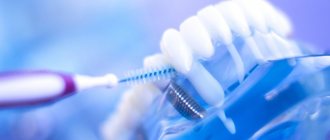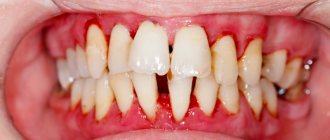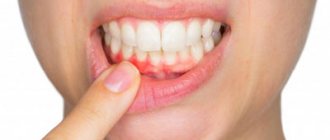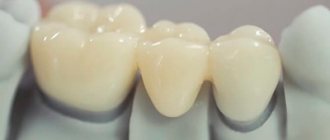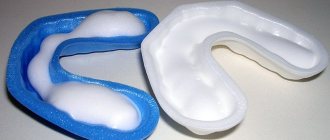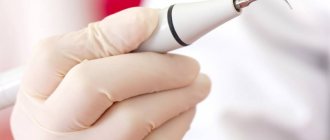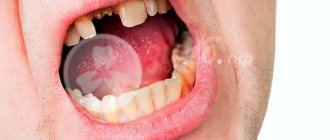Physiotherapy is a method of therapeutic influence on the body of natural, physical factors. These include electric current, light, heat, ultrasonic and magnetic radiation. Physiotherapy is effective during the rehabilitation period after operations, injuries, and for the treatment of acute infectious diseases. In this case, the body experiences less stress than when taking drugs orally, intramuscularly or intravenously.
In addition to the basic treatment plan, dentistry uses electrophoresis, ultrasound and laser therapy.
Indications for the use of electrophoresis in dentistry
- periodontitis;
- pulpitis;
- glossalgia;
- glossitis;
- purulent and inflammatory diseases of the oral cavity;
- dental cysts;
- dental granulomas;
- pathology of the facial nerve;
- inflammation of dental cells (alveolitis);
- lesions of the oral mucosa;
- severe pain after treatment or tooth extraction.
Despite the rapid development of technology in dentistry, electrophoresis has been and remains one of the most effective and affordable physiotherapeutic methods for treating hard and soft dental tissues.
Indications and contraindications
Physiological therapy allows you to cope with various problems and organize rapid tissue restoration, including after surgical interventions. The main indications include:
- stomatitis, gingivitis;
- damage to nerve fibers, pulpitis;
- pain after treatment, including filling;
- restoration of mucous membranes and other tissues after surgery or injury;
- in chronic inflammatory processes.
The doctor can choose the treatment method, duration and use of auxiliary methods after diagnosis. Also influencing factors are the general condition of the oral cavity and existing diseases of other organs. The dentist should take into account that therapy is not prescribed if there are the following contraindications:
- neoplasms, including malignant ones;
- open heavy bleeding;
- respiratory, cardiac, renal failure;
- fractures, other undocumented injuries;
- problems of the cardiovascular system, rhythm disturbances;
- chronic diseases in the acute stage;
- pregnancy;
- installed metal structures, for example, braces;
- blood diseases;
- increased body temperature;
- mental disorders, nervous system problems.
Advantages and disadvantages
The use of physiotherapy methods in the field of dentistry has the following advantages:
- the process of blood supply to tissues improves;
- pain relief, increasing the comfort of rehabilitation for the Patient;
- metabolism in cells accelerates;
- can be used for preparation before surgery;
- the skin and mucous membranes recover faster after surgery;
- you can quickly eliminate inflammatory processes, hematomas after injuries or surgery;
- scars can be removed completely or partially depending on the initial condition;
- The tone of nerve fibers and muscles increases.
The disadvantages include:
- There are contraindications that must be taken into account during preparation. This reduces the risks for the Patient and eliminates complications or worsening of the condition.
- To perform the manipulations, highly specialized equipment is required. Its cost is often high, which affects treatment prices. Not all clinics spend money on purchasing equipment, which requires the patient to search for an institution where such services will be provided.
- Physical therapy is not the primary treatment. It is prescribed only as part of a complex, which significantly increases the effectiveness of the measures taken. But in many cases, massage or other measures cannot be avoided, so the use of specialized physiotherapeutic equipment and methods can be called integral in general therapy.
The need and effectiveness of using physiotherapy is determined by the dentist after examination and diagnosis. It is also necessary to identify contraindications, which allows you to choose exactly the method that will show maximum effectiveness and will be safe for the Patient.
Features of electrophoresis for teeth
The procedure is performed in a treatment room and is comfortable and painless. Allows you to quickly relieve pain in the tissues, inside the dental canal, thereby eliminating foci of infection. Medicines are administered slowly, and the therapeutic effect lasts for several weeks. The risk of developing allergic reactions is minimal.
Medicines used in electrophoresis:
- lidocaine;
- iodine;
- vitamin cocktails;
- calcium;
- a nicotinic acid;
- novocaine, etc.
Purified water, dimexide, and buffer compounds are used as solvents.
Drug electrophoresis in dentistry is performed as follows:
- a special pad is wetted in the medicinal composition;
- the element is fixed at the site of inflammation;
- when treating pulpitis, the teeth are pre-treated and the drug is simultaneously injected into the canals;
- the tissues of the oral cavity are exposed to weak current pulses through the pad;
- The patient is given an electric current with a gradual increase in strength until painful sensations appear. Thus, the optimal indicator of the power of impact on the zone is determined;
- the procedure lasts about 10 – 30 minutes.
The average duration of an electrophoresis course is 10-20 procedures, which are performed daily or with breaks of one or two days.
Physiotherapy methods
Various methods and special equipment are used to perform physiological therapy. Such therapeutic effects include exposure to ultrasound, current, and light. The duration of the course and the use of additional medications is determined by the dentist depending on the disease, tissue condition, and indications.
Electrotherapy includes:
- use of alternating high-frequency current (diathermocoagulation, darsonvalization);
- procedures with low-frequency currents;
- electrophoresis, galvanization with direct current.
To carry out the procedure, electrodes are applied to the diseased area; additionally, medications can be used that, under the influence of electricity, penetrate the tissue to a certain depth.
Electromagnetic therapy is prescribed for warming and anti-inflammatory effects on tissue. Using this method improves immunity and speeds up healing. The effectiveness of the method is observed in case of sinusitis, exacerbation of inflammatory processes, frostbite affecting the maxillofacial apparatus.
Heat treatment includes thermal, biological or chemical effects on the affected area. Used to relieve pain, eliminate swelling, and speed up recovery. The following types of treatment are used:
- paraffin therapy with spraying or applications;
- cryotherapy with cooling of individual areas;
- mud baths with applications.
Massage is prescribed to improve blood supply, tissue healing and scars. Prescribed at the initial stage of the disease or after surgery, for gingivitis, periodontal disease. Depending on the tissue and the desired effect, a manual massage is prescribed, using a drill machine, a brush, or exposure to a water jet under pressure. Methods – vibration, stroking, kneading, rubbing and others.
The following methods are also used:
- phototherapy using laser, ultraviolet, infrared radiation;
- magnetic therapy to relieve pain, eliminate swelling, inflammation;
- Ultrasound therapy to restore blood supply, accelerate regeneration, is also prescribed for cheilitis, periodontitis, and chronic processes in the oral cavity.
Benefits of laser therapy
Laser therapy has many advantages over traditional treatments. Let's list the main advantages.
- The laser beam acts locally and briefly, without irritating the dental nerves or causing thermal reactions, so patients do not feel pain.
- The painlessness of the treatment allows you to eliminate or reduce the amount of painkillers, which is important for patients with intolerance or hypersensitivity to anesthesia.
- The laser does not produce unpleasant sounds characteristic of a drill - patients in the dental chair do not experience stress.
- In combined treatment regimens, laser radiation enhances the effects of medications and increases the effectiveness of treatment in general.
- Laser radiation is detrimental to pathological microflora, so there are no side effects, including inflammation and infection of healthy areas.
- The rehabilitation period is reduced by 2-3 times.
Inflammation of the dental nerve and hard tissues of the tooth
The dental nerve (pulp) is located in the internal cavity of the tooth and contributes to the development and strengthening of the hard tissues of the tooth. Any impact, mechanical or due to infection, can cause inflammation of the nerve. In the acute stage, pulpitis is accompanied by severe pain in the tooth, especially at night. Chronic pathology does not have pronounced symptoms, pain syndrome appears periodically.
Therapy depends on the degree of damage to the pulp tissue. If the inflammation is minor, the dentist fixes the drug in the tooth. Until the disease is completely eliminated. The tooth is then filled. If the dental nerve is completely affected, the pulp is first removed under anesthesia. The dental treatment procedure includes cleaning and filling the canals. Then restoration of the upper, crown part of the tooth.
An advanced form of pulpitis provokes the development of periodontitis – inflammation of the upper part of the tooth root. The main symptoms are sharp pain when pressing on the tooth, swelling of the adjacent gums. It also occurs in acute and chronic stages. Therapy includes the procedure of depulpation and subsequent filling of the canals. If a cyst is present, in some cases an incision is made in the gum and the affected apex of the tooth root is resected.
Physiotherapy in dentistry in Astrakhan: pain relief, speedy recovery and tissue regeneration
Physiotherapy in dentistry is used quite actively. Various physical influences (temperature, electromagnetic radiation, etc.) help alleviate the course of certain diseases. Plus, many of its methods are good prevention, such as, for example, fluoridation of teeth for caries. The undeniable restorative property of physiotherapy is designed to consolidate the effect after therapy or surgery: electrophoresis, fluctuarization or ultraphonophoresis in our clinic help treat, regenerate and rehabilitate damaged tissues. Many physical procedures reduce pain and promote faster healing of wounds.
Fluoridation of teeth: preventing caries and strengthening enamel
One of the most popular and necessary physiotherapy procedures is dental fluoridation. Due to hyperesthesia (increased tooth sensitivity to temperatures or external influences), tooth enamel needs additional strengthening, which is exactly what fluoridation does, which also prevents caries. In our clinic, fluoridation is performed for both adults and children: fluoride-containing varnishes and solutions reduce the activity of bacteria, while at the same time increasing the resistance of teeth to acidic and other aggressive environments. The process of caries formation slows down, tooth decay decreases.
Fluoridation of teeth happens:
- simple, when fluoride-containing varnish is applied to the teeth with a brush (3-5 sessions) or when a fluoride-containing substance is placed in special trays applied to the teeth for 10-15 minutes (12-15 procedures). However, with this type of fluoridation of teeth, calcium fluoride is not deposited in the depths of their pores (where, perhaps, the carious process has already begun);
- deep fluoridation of teeth with a rather complex technology and consistent execution method. Here, calcium fluoride crystals formed after specific chemical reactions penetrate as deeply as possible and, as it were, “seal” the tooth. The concentration of the active substance is 5 times higher than with a simple type of procedure. Before such fluoridation, it is imperative that the tooth and interdental spaces are thoroughly cleaned of stone and plaque, which prevent fluoride from penetrating deeper.
Deep fluoridation is indicated for both adults and children - the regularity of this procedure reduces the incidence of caries in older age, teeth remain strong longer.
A variety of physiotherapeutic methods used in the regional dental clinic in Astrakhan
Electrophoresis
- another method of physiotherapy adopted by the dentists of our regional clinic in Astrakhan.
The medicine is introduced into the body through a low-power electric current. Calcium chloride, as a substance that restores tooth structure, is used to relieve pain during hyperesthesia of its hard tissues. Darsonvalization
effectively destroys pathogenic flora, relieves vascular spasms, and stimulates the immune system.
With the help of the D'Arsonval apparatus, you can successfully recover from the treatment of diseases such as purulent abscesses, gingivitis (inflammation of the gum edge), alveolitis (inflammation of the tooth socket), or inflammation of the periosteum due to infections or injuries. Dental magnetic therapy
relieves tissue hypoxia, and also has an anti-inflammatory, analgesic and restorative effect. Our dental physiotherapists will tell you about all methods of physical therapy and will select the optimal types for you, taking into account your medical history and existing dental ailments.
View prices for paid physiotherapy services >>
Make an appointment with a dentist >>
Tooth sensitivity
A painful reaction to temperature changes, or due to chemical exposure is called hyperesthesia. The cause is increased abrasion of the enamel and the presence of pathological inflammation of the soft tissues in the oral cavity.
In this case, dental treatment is based on eliminating the root cause of the disease: treating inflammation, removing low-quality or broken fillings, closing the roots of the tooth due to receding gums.
The procedure consists of daily remineralization, as well as the use of physiotherapy. Typically, it takes about two weeks for tooth enamel to restore. The patient then continues therapy at home.
